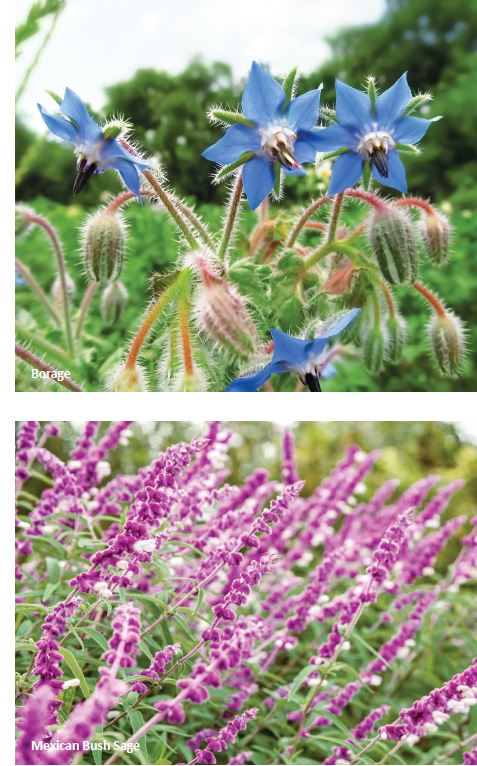Under planting, or companion planting, is a form of enhancing the condition of the existing trees or plants in your garden. Using this form of gardening will attract pollinators, deter common pests, and supply nutrients as well as improve productivity of fruiting trees like citrus.
Companion planting is an easy, organic way to improve the health of your citrus trees that need copious amounts and a steady flow of nutrients and minerals especially nitrogen to flourish properly. It is also a great way to assist with and help ensure that citrus trees produce a plentiful crop.
Companion plants are intended to enable the gardener to lessen the need for heavy applications of fertilizers and pesticides. Generally, fruit trees are not dormant in winter months so they will continually make use of the additional nourishment that a gardener wisely makes available.
Fruit trees fall prey to insects very easily and can be susceptible to pests and diseases. Researching the best plants to use as companions, those that either deter or draw away harmful bugs, is worth the effort.
The use of fragrant herbs and ornamental plants that attract beneficial insects, flowering plants with a high sugar content in their nectar and plants with abundant small blooms, are highly recommended.
Marigolds and petunias are useful in driving away troublesome and unwanted insects, while sage, fennel, lemon balm, and parsley can help to draw in beneficial, predatory and pollinating insects all while also improving the soil quality.
Attracting beneficial insects is a textbook method of fending off pests and unwanted crawlies on your fruit trees. Not only can they provide another means of pollination, these beneficials will make a snack of any aphids, mealybugs, or leaf miners as well.
 Lantana, sweet alyssum, and cilantro have all been proven to be valuable and reliable when used as an enticement for beneficial insects.
Lantana, sweet alyssum, and cilantro have all been proven to be valuable and reliable when used as an enticement for beneficial insects.
Pest-repelling companion plants (especially aphids) include garlic, rosemary, and other strong scented culinary herbs planted directly around the base of your fruit trees. Also try including dill, an herb from the Mediterranean part of the world that is popular in the kitchen.
Examples of insects that are charmed by dill plants are ladybugs, lace wigs, aphid midges, and tachinid flies. These insects feed on pests and their larvae.
A charming and appealing supplement to your citrus garden area would be lavender, a colorful, fragrant addition with its impressive purple blooms. Besides being a pleasing augmentation to your citrus tree space, lavender will repel mosquitos, fleas, ticks, and mice.
Under planting is a valuable and convenient technique to draw pollinators and repel unwelcome pests. Another approach is the use of flowering perennials in your adjacent flowerbeds or garden plots.
One example of a flowering perennial that serves as a deterrent to pests and attracts pollinators is yarrow. They are an especially good way to increase lemon tree pollinators, since yarrow flowers at the same blooming time as lemon trees in spring and summer.
Blooming at the same time is important in that pollinators will arrive as the trees are putting on buds. Also, yarrow’s bold color palette of red, purple, orange, pink and white is enticing to insects.
Other perennials to consider are the Mexican Bush Sage with its violet and purple blooms that flower from spring through fall (requires full sun and is known as a butterfly magnet).
Jasmine is an evergreen or semi-evergreen perennial that is a stylish match for citrus trees, most are fragrant, generate lovely blooms, and will enhance your garden’s physical presence.
Borage, also known as starflower, is a low maintenance plant that prefers full or part sun. The starflower is an annual (whose leaves and blooms are edible) that will appeal to bees, butterflies, and hummingbirds. Even predatory insects find borage inviting.
Calendula, a familiar annual also called marigold, will perform a dual purpose by attracting both pollinating and predatory insects besides adding a welcoming and warm feeling to the garden with its brightly colored blooms.
Because marigolds can be intolerant of full sun and very high temperatures, they make excellent under planting material for fruit trees. Just keep in mind that they may also need extra watering to maintain their healthy vigorous appearance without drawing the needed hydration away from the thirsty citrus tree.
Problems with mosquitos can be addressed with the use of lemongrass, a well-known deterrent for mosquitos and various other flies that are fond of hiding in the canopy of fruit trees.
To ward off snails and slugs, try planting fennel near the trees. For problems with worms, try scattering diatomaceous earth on the ground beneath citrus trees to effectively deter them, and even slugs and other pests that slide across the area of application.
Some little-known tricks often employed by savvy gardeners include sprinkling your morning coffee grounds onto the soil under your tree. This will increase nutrients such as phosphorus, magnesium, nitrogen, and copper, and increase the acidity of the soil that citrus trees prefer.
Also, adding crushed eggshells to the soil around your trees will create a slow-release calcium mixture that is excellent for citrus trees. And adding Epsom salt to the soil is an effective and useful soil amendment for treating any magnesium deficiency the trees may have in order to thrive and produce.
Not every plant is meant to be planted with fruit trees. Root crops are truly verboten, especially potatoes, carrots, beets and turnips. The roots, bulbs and tubers of these plants/vegetables can alter the nutrients and minerals in the soil depriving these essentials to the trees themselves.